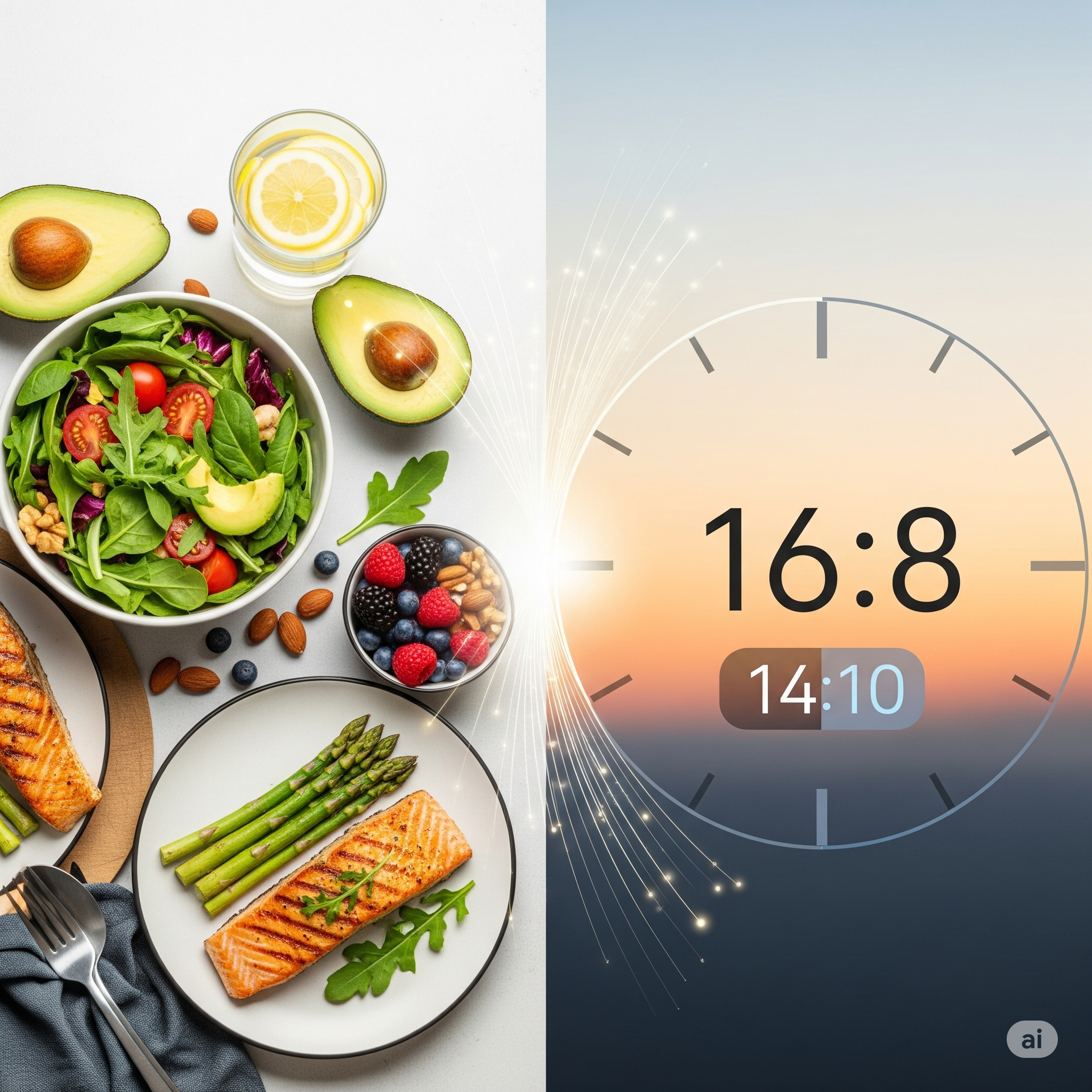What is IF(Intermittent fasting), What to eat and drink, Benefits and harmful effects of IF, Who should not do intermittent fasting, Most effective IF, How to start IF, Men vs women
What is IF (Intermittent fasting)

Are you looking for a fresh approach to health and weight management that goes beyond traditional diets? Intermittent Fasting (IF) might be your answer! It’s not just a trend; it’s an ancient practice re-emerging with exciting modern benefits. But what exactly is it, and how can you make it work for you? Let’s dive in!
What Exactly is Intermittent Fasting (IF)? It’s Simpler Than You Think!
Forget restrictive calorie counting! Intermittent Fasting isn’t a “diet” in the conventional sense. Instead, it’s a pattern of eating that cycles between periods of eating and voluntary fasting. Think of it as consciously choosing when you eat, rather than what you eat (though what you eat still matters!).
Humans have naturally fasted for thousands of years, whether due to scarcity or for spiritual reasons. Today, we’re rediscovering its potential for modern health.
The most popular approach? The 16:8 method. This means you fast for 16 hours and have an 8-hour “eating window.” For example, if you finish dinner at 7 PM, you wouldn’t eat again until 11 AM the next day. Other variations include 20:4 or even alternate-day fasting. You can practice IF daily or just a few days a week, adjusting your eating window to fit your lifestyle – morning, afternoon, or evening!
Fueling Your Fast: What to Eat and Drink for Success
During your fasting window, the rules are clear: no solid food or sugary drinks. But don’t worry, you won’t be parched! You can freely enjoy:
- Water (plenty of it!)
- Black coffee
- Unsweetened tea
These zero-calorie beverages keep you hydrated without breaking your fasted state.
When your eating window opens, it’s time to nourish your body! To maximize benefits, especially when breaking your fast, start with easily digestible foods like:
- Soups and broths
- Smoothies
- Cooked vegetables
Once you’ve gently eased your digestive system, incorporate nutrient-dense, whole foods into your meals. Think:
- Lean proteins
- Whole grains
- Fruits and vegetables
- Healthy fats
- Legumes
The key is to minimize highly processed foods, excessive sugar, unhealthy fats, and too much salt. Remember, even with IF, the quality of your food is paramount for achieving real health benefits!
The Ups and Downs: Benefits and Potential Side Effects of IF
Intermittent Fasting offers an impressive array of potential benefits:
- Improved body composition: Hello, weight loss and reduced belly fat!
- Lower disease risk: It can help reduce your risk of chronic illnesses.
- Enhanced brain function: Sharper focus and better cognitive health.
- Better heart health: Supports a healthier cardiovascular system.
- Stabilized levels: Can help lower blood pressure, cholesterol, insulin, and blood sugar.
However, like any significant lifestyle change, IF can come with some temporary side effects, especially as your body adjusts:
- Fatigue and irritability
- Hunger and low energy
- Headaches
- Disrupted sleep
- Increased stress levels
- Digestive issues (indigestion, heartburn, diarrhea, or constipation)
It’s also crucial to be aware that IF can, for some, trigger overeating or contribute to disordered eating patterns. Listening to your body is key!
Is Intermittent Fasting Right for You? Important Considerations
While IF can be transformative for many, it’s not suitable for everyone. It’s crucial to exercise caution and always consult your doctor before starting any new eating pattern, especially if you fall into any of these categories:
- Pregnant or breastfeeding women
- Children or elderly individuals
- People with chronic diseases
- Individuals with a history of eating disorders
Finding Your Rhythm: The Most Effective Way to Do IF
For most beginners, the 16:8 regime is often the most manageable – both physically and emotionally. To optimize its effectiveness and avoid discomfort, aim to keep your eating window earlier in the day, either in the morning or afternoon. Finishing your last meal too late in the evening can sometimes lead to indigestion or heartburn.
Ready to Start? Your Step-by-Step Guide to Intermittent Fasting
You don’t need to jump straight into 16:8! Gradual is good. Here’s how to ease into IF:
- Extend your overnight fast: After your dinner, avoid any food or sugary drinks.
- Delay breakfast: In the morning, don’t rush to eat. Wait a few extra hours before “breaking your fast.”
- Gradually increase: Slowly extend this fasting window each day until you comfortably reach 16 hours.
If you find you can fast longer without feeling overly hungry or “hangry” (you know the feeling! 🤣), you might explore 20:4 or even alternate-day fasting (24-hour fasts followed by a regular eating day).
Men vs. Women: Does IF Affect Us Differently?
Interestingly, research on IF and women is still evolving, but some data suggests women might react differently. Some studies indicate that women could experience:
- Higher cortisol (stress hormone) levels
- Declined insulin sensitivity
- Slowed metabolic rates (potentially contributing to obesity and diabetes)
For this reason, many experts recommend that women consider shorter fasting windows like 14:10 or 16:8 and perhaps practice IF 4-5 days a week instead of daily.
However, there’s good news for older women! Women in their 50s and 60s, particularly during pre-menopause and menopause, often find significant benefits from IF. Combined with physical activity, it can help maintain muscle mass, combat stubborn fat, and potentially prevent age-related diseases, including certain cancers. Men, generally, seem to experience consistent benefits across most age groups.
Ultimately, Intermittent Fasting is a powerful tool with the potential to transform your health. With a few adjustments to suit your unique body and goals, it can be a valuable addition to a healthy lifestyle for many people.
Want to dive deeper? For additional scientific studies and information, click here
Curious about my personal journey with IF? Read my story here

